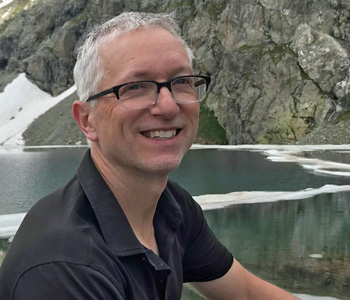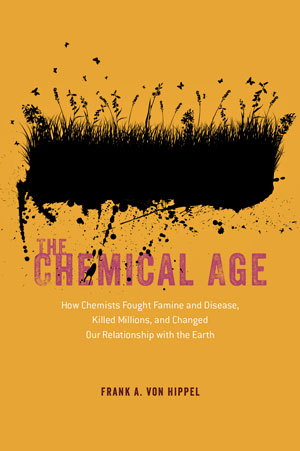
The Chemical Age is the story of intense famines, ceaseless wars, ravaging diseases, and ecological disasters, told through the personal lives of the scientists who strove to either halt calamity or facilitate it. The book orbits around the human propensity to innovate without thinking through potential consequences.
Perhaps no field of scholarship illustrates this better than that of chemistry. Since the origin of organic chemistry in 1828, scientists have synthesized hundreds of thousands of chemicals. Many of these chemicals were designed to fight the scourges of humanity, such as famine and infectious diseases, while other chemicals were designed to kill people. Scientists engaged in extraordinary risks to advance and test their chemical innovations, and some participated in the most egregious crimes in history. All the while, these novel chemicals were broadcast throughout the world, where they poisoned wildlife, disrupted ecosystems, and compromised human health.
Ultimately, the realization of these unintended consequences gave rise to the global environmental movement. I would like the reader to gain an appreciation for human history through the lens of chemistry—for the ways in which famine, plagues, war, and ecology are inextricably bound; for the desperate races to save society from collapse as crops failed and diseases swept across national boundaries; and for the outsized role of innovative scientists in humanity’s trajectory.
The Chemical Age connects the sources of human misery throughout history—famine, plague, and war—and follows historical currents to their unpredictable destinations, including world wars and environmental destruction. A force behind these historical currents is the dynamic field of chemistry, pushed ever forward by some of the most brilliant minds of the modern era. My grandfather and great-grandfather were deeply involved in many of the events covered in the book, and so I heard about the history during my childhood (see the epilogue). That sparked my interest, as did my career in the fields of ecology and ecotoxicology.
I was born and raised in Alaska, where I spent much of my youth outdoors—playing in the woods with other neighborhood kids, working on our farm, hiking and cross-country skiing in the mountains next to town, and beachcombing for glass floats lost by Japanese fishing boats. I graduated early from high school and worked on a collective farm—a kibbutz—in the Negev Desert of Israel, where I transplanted date trees and fixed broken irrigation pipes. Afterwards, as a student at Dartmouth College, I professionalized my passion for the outdoors by majoring in biology with an emphasis in ecology. During my college years, I worked for a term for Arthur Westing at the Stockholm International Peace Research Institute; Arthur had led the Herbicide Assessment Commission during the Vietnam War (see Chapter 12), and from him I learned about the environmental toll imposed by war. I also studied tropical ecology for a term in remote rainforests of Costa Rica, where I learned how to conduct fieldwork as a professional ecologist. I continued my training in the ecological sciences as a Ph.D. student at the University of California, Berkeley. During these years, I conducted fieldwork in California and a remote African rainforest, and I taught tropical ecology in the Peruvian Amazon.
My first faculty job was an assistant professorship with Columbia University teaching field ecology courses in Arizona and Mexico. During this time, I also continued my field research in Africa. I then moved back to Alaska and worked as a professor at the University of Alaska Anchorage for 17 years. Throughout these years, I taught field ecology courses in many parts of the world, including a semester in Chile, a semester in Argentina, two semesters at sea sailing around the world, and many shorter courses in Latin America. I also conducted field research in Latin America, Australia, and Alaska. I ended up teaching field courses and conducting field research in about 30 countries and in the Pacific, Indian, and Atlantic oceans, as well as travelling through an additional 15 countries.
As my career developed in academia, I focused more and more of my research on the effects of pollution on human and wildlife health. I especially focused on the health and environmental effects of contaminants in tribal communities where pollution from Cold War military installations and mining operations constitutes an environmental injustice. These long-term projects, still underway, in places such as St. Lawrence Island in the Bering Sea, Lake Atitlán in Guatemala, and Groote Eylandt in Australia, allowed me to witness the impacts of environmental pollutants on some of the most vulnerable people and ecosystems in the world.
I began writing The Chemical Age while teaching a field course in Argentina, and my international work allowed me to write with a broader perspective. The Chemical Age covers historical events that occurred throughout the Americas, Europe, Asia, Africa, and Australia. My work in these continents allowed me to see the cultural and political contexts of historical events in a place-based manner, and to visit many of the sites described in the book.
On one serendipitous occasion, while strolling through the grounds of my hotel in Bangalore, India, I stumbled upon Ronald Ross’s laboratory where he examined the internal organs of thousands of mosquitoes in search of the malaria parasite. By happenstance, just after I had written the chapter on Ross (Chapter 2), my wife and I had reserved lodging at a hotel that contained his lab amidst other 19-century ruins. History is full of happenstance, and I was delighted to relive it through my accidental wandering.
I also found myself intrigued by the many ways that chemical history is interconnected. I discovered these connections as I researched all parts of the book, as when Monsanto Corporation parodied Rachel Carson’s Silent Spring (Chapter 11) by invoking a resurgence of the Irish potato famine (Chapter 1), malaria (Chapter 2), yellow fever (Chapter 3), typhus (Chapter 4), and bubonic plague (Chapter 5) as the natural consequences of eliminating pesticides.
If a reader were to flip open the book at a random place, I hope they would encounter one of the eccentric scientists pursuing their research with a singular focus no matter what chaos stirred around them. A reader would gain a quick understanding of the book’s major themes by reading the four-page prologue. A reader could also start any of the four sections of the book—famine, plague, war, and ecology—to see if the book’s style is attractive to their tastes. The epilogue is best read last, because it tells a personal story that relates to the broad historical sweep of the book.
A reader most interested in the origins of the environmental movement would especially like chapters 10 (Resistance), 11 (Silent Spring), and 12 (Wonder and Humility). These chapters examine environmentalism through the personal struggles and beautiful writings of Rachel Carson. These chapters also reveal how the environmental movement is rooted in democracy and repulsed by corporate and governmental violations of the public trust. Rachel Carson’s Silent Spring motivated citizen engagement in protests against pollution, the enactment of environmental laws, and the organization of scientists to stop the environmental destruction of the Vietnam War. Corporate malfeasance and governmental neglect continued, but no longer against the backdrop of an uninformed and uninvolved citizenry.
“The problem that I dealt with in Silent Spring,” Carson said, “is not an isolated one. It is merely one part of a sorry whole—the reckless pollution of our living world with harmful and dangerous substances.” It is my hope that The Chemical Age furthers Carson’s goal to educate people about the pollution of our world. The book does this by exposing the lofty ambitions of scientists to rid the world of hunger and disease, and by examining how chemicals designed for public health were appropriated for the battlefield (and vice-versa). For in the end, history is much more complex than battles between good and evil, and good people trying to solve intractable problems often create even bigger problems in the process.
The Chemical Age ultimately tells a story both about humanity’s courage in the face of adversity and moral decay during times of great evil. Through chemistry, we have fundamentally altered our world. We have forced famine and infectious diseases to retreat, thereby vastly improving our ability to live fulfilling lives. We have increased the lethality of war to such an extent that we are now capable of destroying all humanity, rather than just the neighboring village. We have so thoroughly altered the chemical makeup of the environment that biodiversity is in a state of free-fall and we will forever live in a world degraded of its natural diversity.
But a deep understanding of this history also gives us the means to improve our trajectory—to keep famine and disease at bay while avoiding war and cleaning up the environment. Humanity sits at a tipping point, poised for a future when either the destruction in the 20th century will be viewed as the beginning of a long slide into misery or the end of a period of hubris that future generations will find hard to comprehend.


Frank von Hippel is a professor of ecotoxicology in the Department of Biological Sciences at Northern Arizona University. Frank’s research incorporates molecular, organismal, and ecological approaches to solve problems in environmental health. Frank’s research has been widely covered in the press, including The New York Times, National Public Radio, The Economist, the BBC, and many other media outlets. Frank serves on the editorial board of the journal Environmental Pollution, hosts the Science History Podcast and serves on the board of the Science Communication Network.